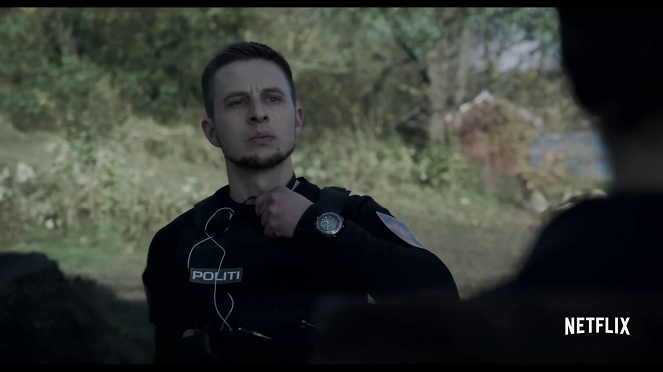Regie:
Paul GreengrassDrehbuch:
Paul GreengrassKamera:
Pål Ulvik RoksethMusik:
Sune MartinBesetzung:
Jonas Strand Gravli, Thorbjørn Harr, Anders Danielsen Lie, Seda Witt, Lars Arentz-Hansen, Jon Øigarden, Anneke von der Lippe, Øystein Martinsen (mehr)Streaming (1)
Inhalte(1)
Basierend auf wahren Ereignissen wird erzählt, wie Überlebende, Trauernde und ganz Norwegen nach dem verheerenden Terroranschlag Gerechtigkeit und Heilung suchen. (Netflix)
Videos (1)
Kritiken (10)
Zuerst dachte ich, wieso lässt man diese Geschichte zweimal drehen und dazu noch in einem Jahr… aber dann las ich den Namen des Regisseurs und es wurde mir alles klar – Paul Greengrass. Das Thema haargenau auf ihn geschnitten. Ich würde den Film sogar besser bewerten, wenn ich nicht den ursprünglichen gesehen hätte, der genug schockierend und vor allem, was die künstlerische Seite angeht, total ausgezeichnet war. Aber ich dachte, um die Ehre dem Regisseur zu erweisen, probiere ich es. Und ja, ein paar Kritikpunkte hätte ich. Vor allem der Angriff, der ist sehr einfach und ohne Mühe gemacht. Weil er aber nur ungefähr ein Drittel des Films einnimmt, können die zwei anderen Drittel fesseln. Es ist eine richtige Gefühlsschleuder, weil der Film die Gedankenwelt von Breivik, welche schockiert jedes Mal, wen sie auf der Leinwand erscheint, abbildet. Er zeigt aber auch junge Leute, die seinen Amoklauf überlebt haben, und zwar mit allen Folgen. Zum Nachdenken sicherlich gut, aber am besten ist eigentlich der Schluss, der das Opfer-Kapitel mit einer Gerichtsverhandlung abschließt. Die Laufzeit konnte ruhig um eine halbe Stunde kürzer sein, aber andererseits ist es ein typischer Greengrass, also wird alles so zivil sein, inklusive der Kamera, dass ihr den Eindruck bekommt, das alles betrifft auch euch persönlich.
()
Die Attacke wird in der ersten halben Stunde erledigt und sie ist nicht so hinreißend, wie man erwartetet. Der Rest des Films zeigt die Gesellschaft, wie sie sich damit auseinandersetzt. Ein überlebender Junge mit einem Trauma und seine Familie, Breiviks Anwalt und seine Familie, Breivik selbst und der Gerichtsprozess. Für den Meister Greengrass ein überraschend mechanisches, langweiliges Erzählen, das sich auf den Kontrast von der Tiefe des Leidens eines traumatisierten Jungen und der schockierenden Ruhe des Mörders (die durch seine politische Überzeugung bestärkt wird) verlässt. Im Film gibt es ein paar Gedanken von Greengrass und als informative Aussage ist der Film verdienstvoll. Was aber das Zuschauererlebnis und die Vermittlung des Schreckens betrifft – da ist Utøya 22. Juli von Erik Poppe besser.
()
Paul Greengrass ist ein Meister der hinreißenden Stimmung und mit diesem Film hat er das wieder bestätigt. Falls jemandem die Szene von dem völlig verrückten Massaker nachlässig und nicht fesselnd vorkommt, tut er mir wirklich leid (und es kann ruhig der Gründer von FilmBooster sein). Ich habe nämlich lange nichts Abstoßenderes gesehen. Außer Greengrass ist es auch das Verdienst des Darstellers von Breivik, der furchteinflößend wirkt. Und je länger er im Film zu sehen ist und wenn aus seiner ursprünglich stummen Figur ein beredter Psychopath wird, desto größer wird die Angst. Außer Breivik sehen wir aber auch die Folgen seiner Tat, mit denen eine der betroffenen Familien kämpfen muss. Wir lernen auch seinen Anwalt kennen und spüren den Druck auf den norwegischen Ministerpräsidenten… Es scheint mir, dass in diesem Film wirklich alles war. Ich behaupte nicht, dass der Film angenehm ist. Es war aber ein unvergessliches Erlebnis. Ungefähr so wie… Ja, so wie der Film Flug 93 von Greengrass.
()
Greengrass’s adaptation is as compelling as Seierstad's book. It is a pity, perhaps, only the absence of Norwegian, the fragmentation of individual motives and themes, or the cutting of the opening third of the book about Breivik himself to focus only on the procedural passage of the attack and the trial.
()
I am reluctant to use the word “complex”, which for me means a film that offers numerous opposing perspectives and ambivalent impressions, which is not the case in Greengrass’s factually concise docudramatic reconstruction, in which he constructs two relatively unambiguous ideological positions (similar to Bloody Sunday), which he pits against each other so that he can offer the intended political statement in the end (threats against Lippestad only bring shades of grey into the narrative, but they are not laid out in greater detail and can also be seen as a means of supporting the argument for the power of democracy, which, regardless of the possible risks, cannot serve only those who deserve it, but everyone). ___ Good versus evil, love versus hate, a deranged individual versus a community which, thanks to mutual support and cooperation following the trauma, can get back on its feet and face evil. With his movements, cold-blooded thinking and belief in his own infallibility, Breivik is reminiscent of a machine. If we learn anything about his motives, it is from his mother’s statement, which the attorney needs because of the trial, or thanks to the fact that he has become a research subject for psychologists. In the scenes from the prison with a predominance of cold colours, he is aggressively set apart from his surroundings by his red shirt. Conversely, through flashbacks and subjective sounds, we “see into the mind” of the traumatised, insecure and vulnerable Viljar and get to know him in a number of situations with his supportive loved ones in which he gives expression to his emotions. We not only observe him, but we experience who he is. Instead of a “traitor”, a “Marxist” or a “member of the elite”, as Breivik blanketly labels his victims, we get to know an actual person and his story. As we are shown through numerous parallels in the way the two figures are depicted, Viljar is not from a certain moment most at risk from the wounds that he suffered, but rather from the possibility that he, like Breivik, is starting to become isolated from others and will stop seeing himself as a member of the broader community.___ The rhythm of the smoothly flowing narrative is masterfully set by the large number of viewpoints between which Greengrass cuts. After the dynamic beginning, which offers a broad variety of rapidly alternating viewpoints, a calming occurs and we watch only Breivik and Viljar for a moment. If the narrative jumps to another character, thanks to the prologue we are already familiar with them and we know what role they play in the web of relationships and what element of Norwegian society they represent. After this slowing down and narrowing of focus, the film also transitions from individual actions, recorded step by step almost in real time, to their more general sociological and political implications. Of course, they still serve mainly to support the arguments employed in the final trial. The whole film is a textbook example of how to apply dialectical logic in practice. It does not try to depict the reality of polarised Europe in all its complexity, but rather as a clash of two principles, which it succeeds in doing in a very factual and extremely suggestive manner. 85%
()
(weniger)
(mehr)
Galerie (41)
Photo © Netflix



Werbung